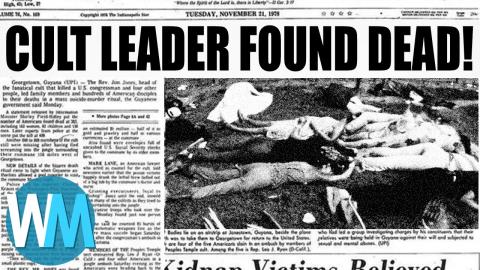Top 10 Disturbing Mass Suicides That Will Shock You

advertisement
VOICE OVER: Rebecca Brayton
Script written by George Pacheco.
Many large-scale deaths in history are actually the result of suicide cults. Whether it's something like the 1993 Wace Siege of the Branch Davidian Compound in Texas, the Battle of Saipan during World War II or the death of Movement for the Restoration of the Ten Commandments of God, these were all haunting mass suicides. WatchMojo counts down ten devastating cases of mass death in history.
Special thanks to our user KWFlawless for suggesting this idea! Check out the voting page at http://WatchMojo.comsuggest/Top%2010%20Mass%20Suicides
Many large-scale deaths in history are actually the result of suicide cults. Whether it's something like the 1993 Wace Siege of the Branch Davidian Compound in Texas, the Battle of Saipan during World War II or the death of Movement for the Restoration of the Ten Commandments of God, these were all haunting mass suicides. WatchMojo counts down ten devastating cases of mass death in history.
Special thanks to our user KWFlawless for suggesting this idea! Check out the voting page at http://WatchMojo.comsuggest/Top%2010%20Mass%20Suicides
Sign in to access this feature
Sign in
to access this feature

